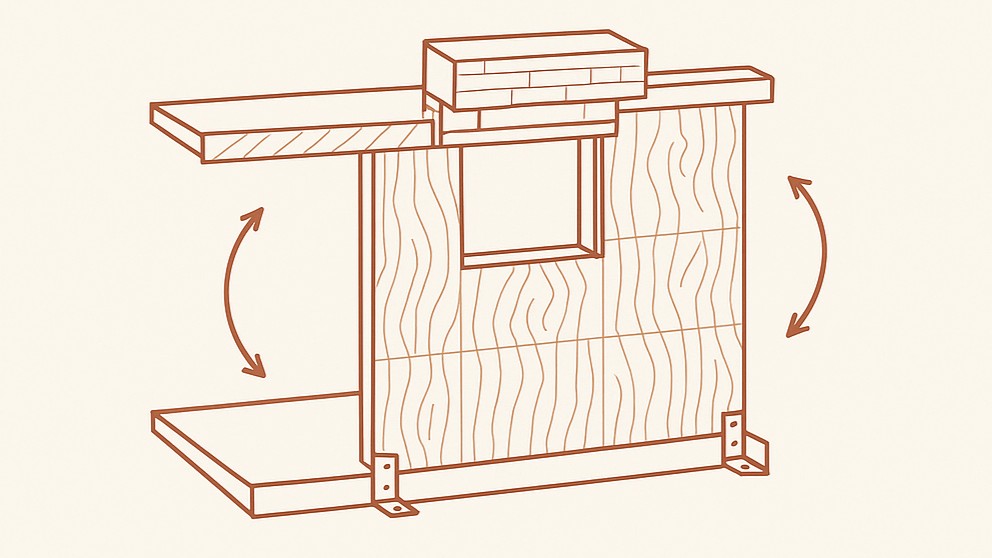Cross-laminated timber (CLT) is increasingly used in sustainable construction, offering strength, speed of assembly, and environmental benefits. The Working Forest has discussed different facets of CLT construction and usage before in other articles. A recent study investigates how structural interactions within one-story segmented CLT shear walls—including floors, parapets, and lintels—affect their performance under lateral loads.
The Role of Structural Interactions in CLT Shear Walls
Traditional design models often simplify CLT shear wall behavior, focusing mainly on base connections like hold-downs and angle brackets. However, this new research highlights that components like floors, parapets, and lintels also contribute significantly to lateral resistance. By integrating these elements in finite element models and calibrating them with experimental data, the study reveals important insights into wall behavior.
Methodology: Detailed Finite Element Modelling
The researchers developed multiple numerical models, varying the inclusion of floors, parapets, and lintels within one-story segmented CLT wall systems. They validated these models against existing test data and examined:
- Lateral stiffness—how rigid the structure is against sideways movement
- Deformation patterns—how the wall bends, slides, or rocks
- Failure mechanisms—whether damage occurs at connections, panel joints, or supporting elements
The findings indicate that these often-overlooked structural features play a major role in how a wall responds laterally—and therefore should not be ignored in design.
Key Findings from the Study
Integration of floors, lintels, and parapets resulted in:
- Greater lateral stiffness, making walls more resistant to sideways forces
- Improved capacity to resist loads, aligning performance closer to continuous (monolithic) wall systems
- Altered failure modes, where failure may shift from base connections toward panel joints or lintel areas when connections are especially strong.
These results highlight that segmented CLT shear walls—when treated as isolated panels—may underestimate the true performance of a wall system. Including the interactive contributions of floors and lintels helps better predict their behavior under lateral loads.
Implications for Building Design and Seismic Resilience
This research has meaningful implications for civil and structural engineers:
- Design practices should consider full system interactions, not just base connections.
- Refined numerical models lead to safer, more effective CLT buildings—particularly in regions with seismic or high-wind risks.
- Building codes may need to evolve to include guidance on modeling these structural interactions.
Especially in seismic zones, where energy dissipation and controlled failure modes are essential, accounting for interactions between components can enhance resilience and prevent unexpected structural weaknesses.
Better Modeling for Improved Timber Engineering
The study underscores the importance of considering the structural synergy within CLT wall assemblies. Floors, parapets, and lintels—though often secondary in conventional design—substantially impact the lateral stiffness, strength, and failure behavior of CLT shear walls. By integrating these elements into numerical models, engineers gain a more accurate, holistic understanding of wall performance.
As CLT continues to grow in popularity for its environmental and structural advantages, incorporating comprehensive modeling practices ensures buildings are both sustainable and resilient. Moving forward, industry standards and design tools should adapt to reflect the complexity of real-world structural systems, safeguarding both occupants and innovation.
